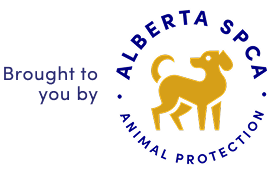Animals in the Classroom
Making responsible decisions about having animals in school settings.
Bringing an animal into your classroom should not be taken lightly. While animals can add excitement and educational value to the classroom, they also come with important responsibilities. Teachers must carefully consider educational outcomes, animal welfare, legal requirements, and student safety before deciding to include animals in a learning environment.
Your Responsibilities
Animals can help teach empathy, responsibility, and meet educational outcomes, but they also require consistent care. Teachers who bring animals into the classroom are legally responsible under Alberta’s Animal Protection Act for ensuring the animals are free from distress. This includes:
- Ensuring the animal has adequate and appropriate food, water, housing, space, ventilation and care when wounded or ill.
- Providing space and opportunity to escape the noise and attention of a class of students.
- Planning care for after school hours, holidays and emergencies. *
- Being prepared for power outages, fire drills and other unexpected events.
- Preventing disease transmission, including zoonotic risks.
*Never send animals home with students. Even short visits can put animals and students at risk.
Learn more about hatching chicks and tadpoles & frogs.
Criteria for Having a Classroom Animal
Some school districts have developed policies for the use of animals in the classroom, which can be helpful guides when deciding if an animal is a good choice in your classroom.

If you do bring an animal into the classroom, ensure:
- There is a sound pedagogic reason for keeping an animal in a classroom.
- You are aware of the specific needs of the animal and can ensure they are met.
- Safety provisions (for both the animal and the students) are in place to avoid the impacts of accidents and zoonotic illnesses (illnesses that spread between animals and people).
- You have veterinary care available for the animal. Tip: Set a good example by letting students know you have a veterinarian who examines your animal on a regular basis.
- Your veterinarian’s name and phone number are accessible for substitute teachers or emergencies.
- You comply with school division policies and Alberta regulations.
- The animal is not a species that is wild-caught, endangered, invasive or requiring a permit.

